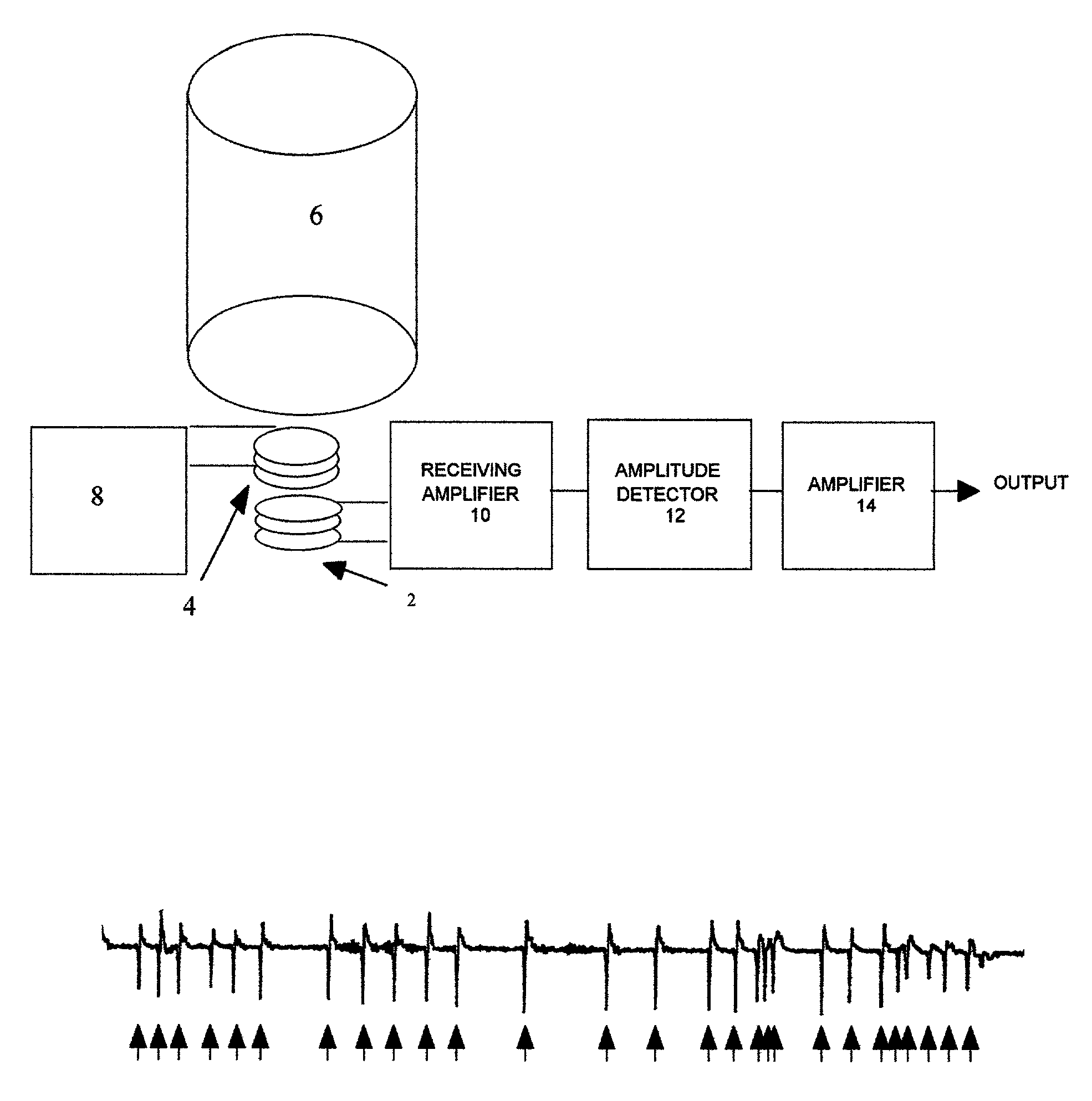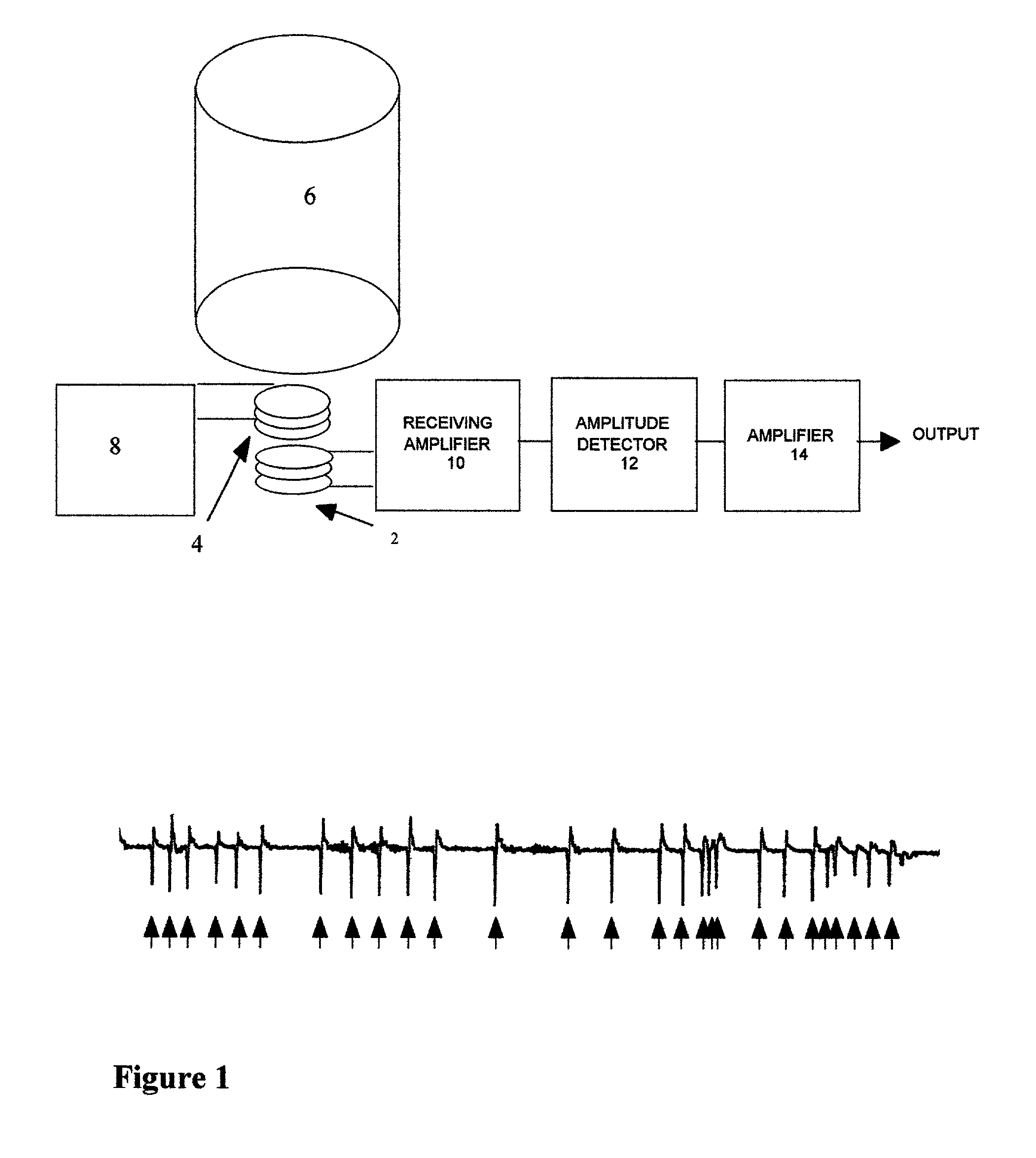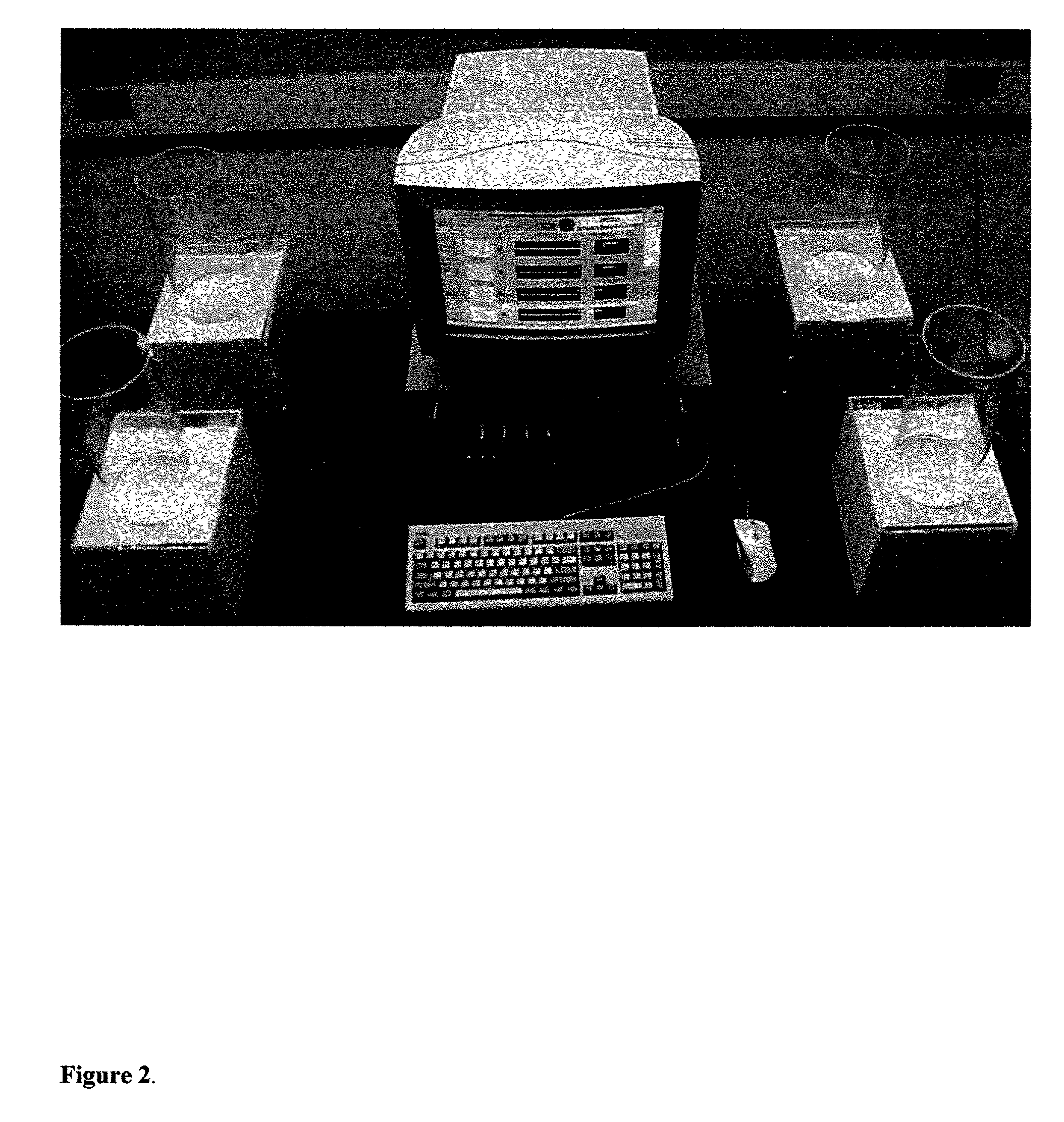Apparatus and method for detecting flinch response to nociceptive agents
- Summary
- Abstract
- Description
- Claims
- Application Information
AI Technical Summary
Benefits of technology
Problems solved by technology
Method used
Image
Examples
example 1
Formalin Induced Behavioral Response
[0076]The injection of formalin into the dorsum of one hind paw of 100 male Sprague Dawly rats over a period of 10 months showed a reliable biphasic flinching of the injected paw, with peak flinch rates during Phase I and II being on the order of 50 flinches / min and 37 flinches / min. FIG. 7 presents the time course of flinch responses, the mean cumulative flinches observed by Phase (Phase I: 203±9 SEM; II: 1058±39 SEM; IIA: 792±27 SEM; and IIB: 266±16 SEM); and the statistical distribution of flinching in Phase I and II. Analysis of this distribution (Kolmogorov-Smirnov) indicates that each Phase was distributed normally (p>0.9999).
System Stability and Reliability
[0077]Separate groups of 4 male Holtzman Sprague Dawley rats were run in the morning (AM) and afternoon (PM) on 5 consecutive days. The following summarizes comparisons of the data.
[0078]Comparison Between Test Chambers
[0079]There was no difference in the scores for Phase I, II, IIA or IIB...
example 2
Characterization of the Variables Influencing the Formalin Response
[0087]Morning (AM) Versus Afternoon (PM) Test Periods.
[0088]Examination of flinching behavior in the morning (08:00–10:00) and in the afternoon (15:00–17:00) over 5 days of testing showed no difference between AM and PM for all four phases (Table 5). There were no differences across time of day for any phase (1-way ANOVA, p>0.10 to 0.99).
[0089]
TABLE 5Cumulative flinching behavior (Mean ± SD) as a function of testingtime, by phase.GROUPNPhase IPhase IIPhase IIAPhase IIBAM20129 ± 55684 ± 210506 ± 141179 ± 103PM20129 ± 60797 ± 293586 ± 186212 ± 134
[0090]Effects of Body Weight on Flinching Behavior.
[0091]Three groups of rats differing in body weight (125–175 grams, 300–350 grams and 400–450 grams) were examined for flinching behavior. No difference in flinch response was observed in Phase I, II and IIA (1-way ANOVA, p>0.05). A weight-related difference was seen in the flinching behavior for Phase IIB (1-way ANOVA, p<0.05...
example 3
Effects of Systemic and Spinal Drugs on Formalin Evoked Flinching Behavior
[0103]Morphine.
[0104]Intrathecal and systemic injection of morphine (μ opioid agonist) resulted in a potent dose dependent reduction of all phases of the flinching response (FIG. 10). The ED50 values were calculated using least squares linear regression analysis of the dose effect (% Maximum Possible Effect, % MPE) curves (Table 11).
[0105]MK801. Intrathecal and systemic injection of MK801 (a noncompetitive NMDA receptor antagonist) resulted in a potent dose dependent reduction in Phase II but not Phase I of the flinching response (FIG. 11). The ED50 values were calculated using a least squares linear regression analysis of the dose effect (% Maximum Possible Effect, % MPE) curves (Table 11).
[0106]
TABLE 11ED50 values for the effects of systemic morphine, intrathecalmorphine and MK801 on flinching behavior (Mean and 95%confidence intervals)*GROUPPhase IIPhase IIAIT Morphine (μg)1.6 (0.6–4.7)1.5 (0.6–3.6)IP Morph...
PUM
 Login to View More
Login to View More Abstract
Description
Claims
Application Information
 Login to View More
Login to View More - R&D
- Intellectual Property
- Life Sciences
- Materials
- Tech Scout
- Unparalleled Data Quality
- Higher Quality Content
- 60% Fewer Hallucinations
Browse by: Latest US Patents, China's latest patents, Technical Efficacy Thesaurus, Application Domain, Technology Topic, Popular Technical Reports.
© 2025 PatSnap. All rights reserved.Legal|Privacy policy|Modern Slavery Act Transparency Statement|Sitemap|About US| Contact US: help@patsnap.com



